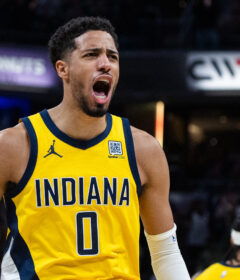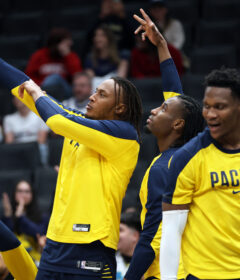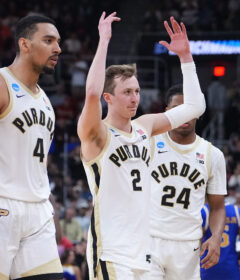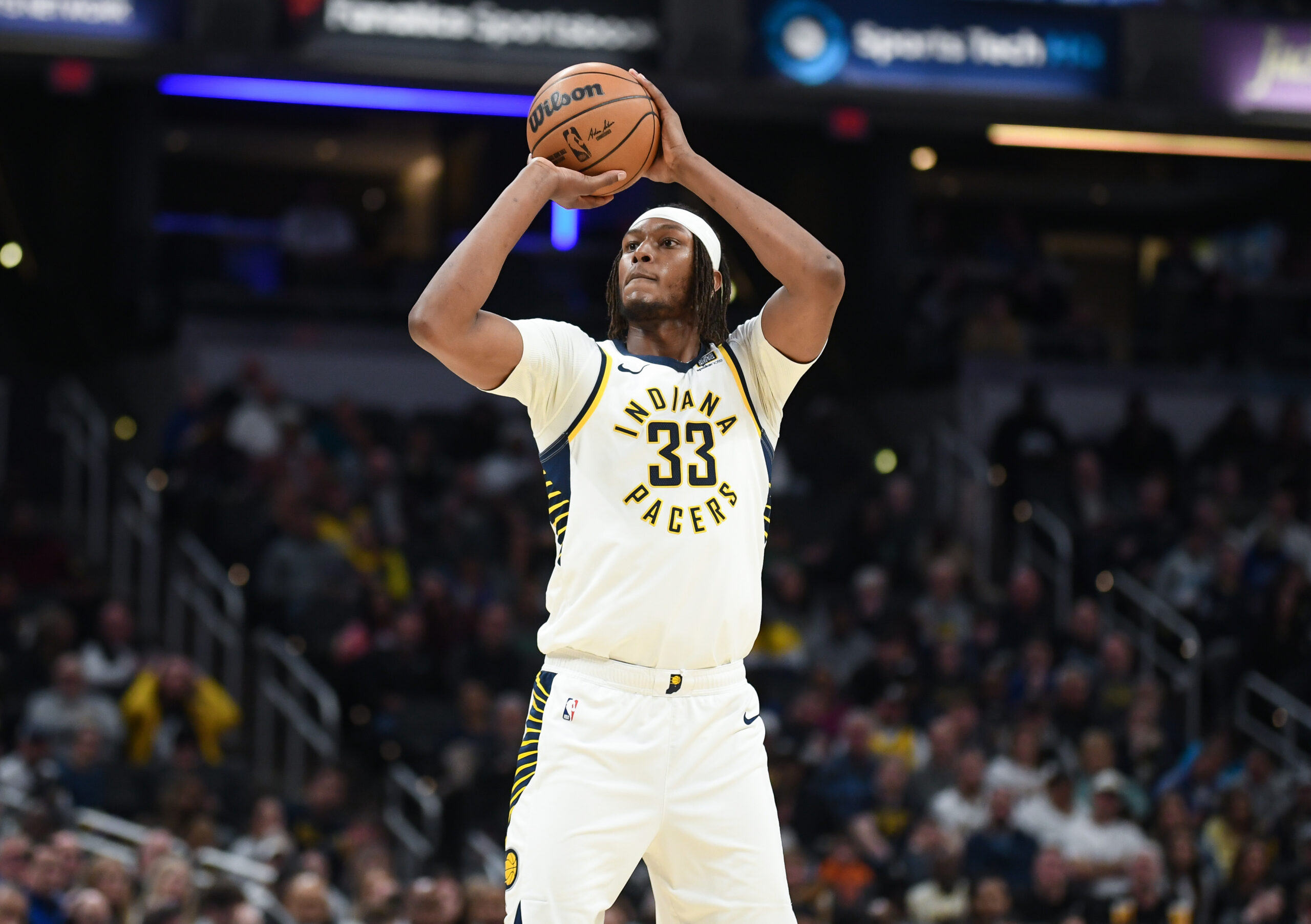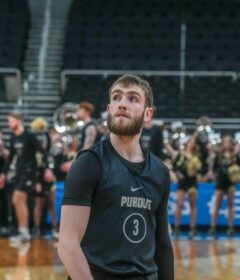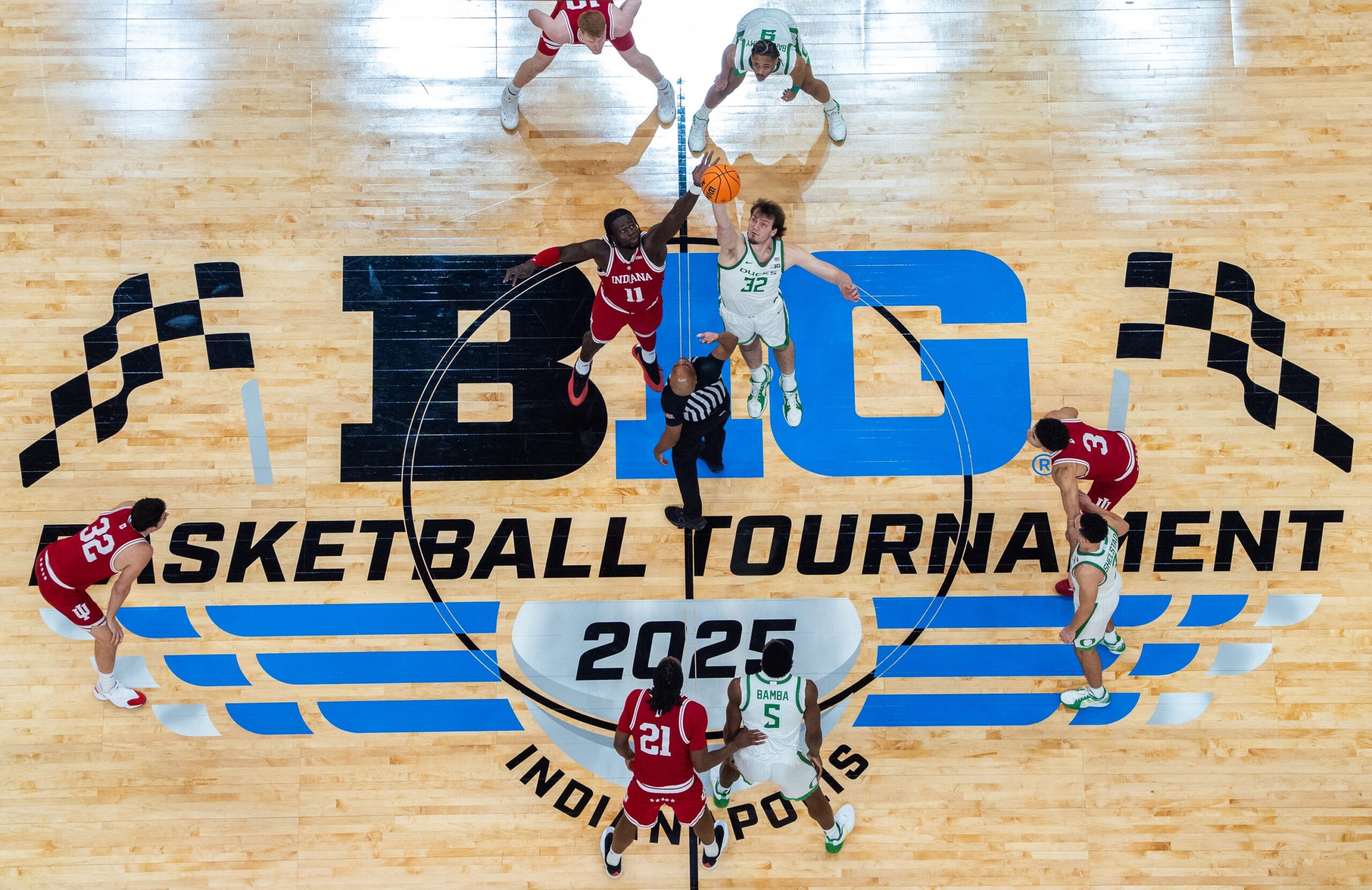Playoff Preview: Matchups in Pacers vs. Hawks
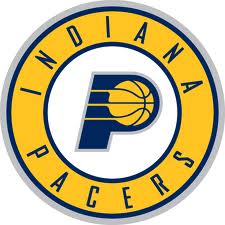
By CHRIS GOFF
ISL Correspondent
So here we go again. For the fifth time, and first since 1996, the Pacers will play the Hawks in the playoffs. Indiana has won twice: 4-2 in 1994 and 3-0 in 1995. How do they match up in this year’s first round? Let’s take a look.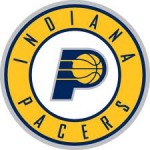
SMALL FORWARD: Kyle Korver vs. Paul George
Korver could swing the series if he goes something like 24 for 38 from behind the arc. Otherwise, he’s a supporting actor who will keep the defense honest. Speaking of defense, Korver’s reputation undershoots his true ability. When these teams played in the regular season, or at least in the first two meetings, Indiana spent far too much time grinding the offense to a halt so George could isolate Korver on the perimeter. In the 89 minutes he and Korver were on the court together, George settled for a lot of jumpers and shot 2-for-15 outside of 4 feet, according to NBA.com. So Korver held his own. Still, he should be easily overshadowed by George, who averaged 17 points a night in his third season.
EDGE: Pacers
POWER FORWARD: Josh Smith vs. David West
West and Smith should go head to head if Larry Drew goes with a small lineup, and that would be loads of fun. West is the total package: smart, skilled, strong and incredibly versatile. He loves those step-back jump shots in which his right leg clears space, though he’s a chameleon sure to make one move a game that you’ve never quite seen from him before. Meanwhile, Smith can do almost anything on a basketball court. Leaning on a muscular post scorer is not his forte, but Smith is stronger than he looks. He must play a marvelous series if Atlanta is to win. His court vision is excellent, and he is the Hawks’ best scorer. Although Smith is more athletic, West is more reliable, so expect Indiana to come out slightly ahead.
EDGE: Pacers
CENTER: Al Horford vs. Roy Hibbert
Horford is more of a power forward, while Hibbert is a true center. When they guard one another – and they will quite often – a give-and-take will ensue. Hibbert, who’s four inches taller and about 30 pounds heavier, should be mostly unobstructed in launching his array of hook shots from the low post. On the other end, expect Drew to use Horford in pick-and-rolls that exploit his quickness advantage. Hibbert is susceptible to midrange shooters because he doesn’t like to leave the paint. Horford shoots an excellent 43 percent on jumpers from 10 feet and beyond, according to Hoopdata. Hibbert is the better defender, but Horford is a superior scorer and rebounder.
EDGE: Hawks
SHOOTING GUARD: Devin Harris vs. Lance Stephenson
Harris seems to have been in the league forever, but is only 30. He’ll have his hands full with whirling dervish Stephenson, who played well down the stretch and became a solid fifth scoring option for the Pacers. The difference isn’t large between the two – Harris averages about 10 points a night, Stephenson nine – so if either team came out ahead it would be a surprise. Stephenson is a better defender while Harris has an obvious edge in playoff experience, having played significant minutes in the 2006 NBA Finals with Dallas.
EDGE: Even
POINT GUARD: Jeff Teague vs. George Hill
Both floor generals are decent 3-point shooters who score in the mid teens and dish assists on a regular basis. Hill played through minor hip and groin injuries at the close of the regular season and is expected to be fine after a week of rest. Given Hill’s pedigree and the fact that he learned the game under Gregg Popovich in San Antonio, the Pacers expect him to be a rock in these situations. Teague was born in Indianapolis and thus is probably eager to perform well. He’s become a very good player who looks for his own shot while still creating offense for teammates with his quickness. By the end of the series Hill and Teague should have similar numbers.
EDGE: Even
THE BENCHES:
Ivan Johnson and Tyler Hansbrough are a near-match as tough, energetic power forwards who are never afraid to shoot or mix it up down low and seem to always wind up with three or four buckets by the final horn. Johan Petro, a 7-foot center, will be more important to the Hawks than Johnson, though, because Hibbert will need to be checked with size at times. The job of D.J. Augustin is to take care of the ball and make open 3s when the Pacers’ post players kick it out. The Hawks probably will eschew a backup point guard and just slide Harris over when Teague sits. DeShawn Stevenson can give Drew bursts of defense and perhaps hit a few 3s. Rookie shooting guards John Jenkins and Orlando Johnson, if they play, are a wash as one-dimensional snipers. Figure on Ian Mahinmi playing about 12 minutes a game as Hibbert’s caddy. Mahinmi has faded since the All-Star break, and Indiana’s defense is 2.5 points per 100 possessions worse with Mahinmi on the court. Gerald Green, who might spell George in tiny bursts, scored a career-high 34 points in the season finale after being out of the rotation for much of the year. Drew could use Anthony Tolliver if the offense needed a stretch-4 to space the floor. Both teams are thin and will want to keep use of the reserves to an absolute minimum. There are no impact players in this series outside of the starting lineups.
EDGE: Even
COACHING:
Drew, in his third season as the Hawks’ coach, led the team to a 40-26 record last season despite Horford playing in only 11 games. Drew is 8-10 in the playoffs. He played 10 seasons as a point guard with the Pistons, Kings, Clippers and Lakers. Second-year Pacers honcho Frank Vogel, like Drew, is in his first stint as a head coach. Vogel is 7-9 in the postseason, including a first-round loss in 2011 as an interim coach. Because these two are relatively inexperienced and new, it’s hard to judge them vis-Ã -vis the other. Vogel did not play in the NBA. He’s proven adept at infusing his players with confidence. Drew was a relatively unknown assistant. He has helped Smith refine and expand his game to an All-Star level. Of course, viewers around the country won’t tune in expecting some sort of Popovich-Carlisle battle of X’s and O’s acumen. Coaching is pretty far down the list of intriguing factors in this series.
EDGE: Even

